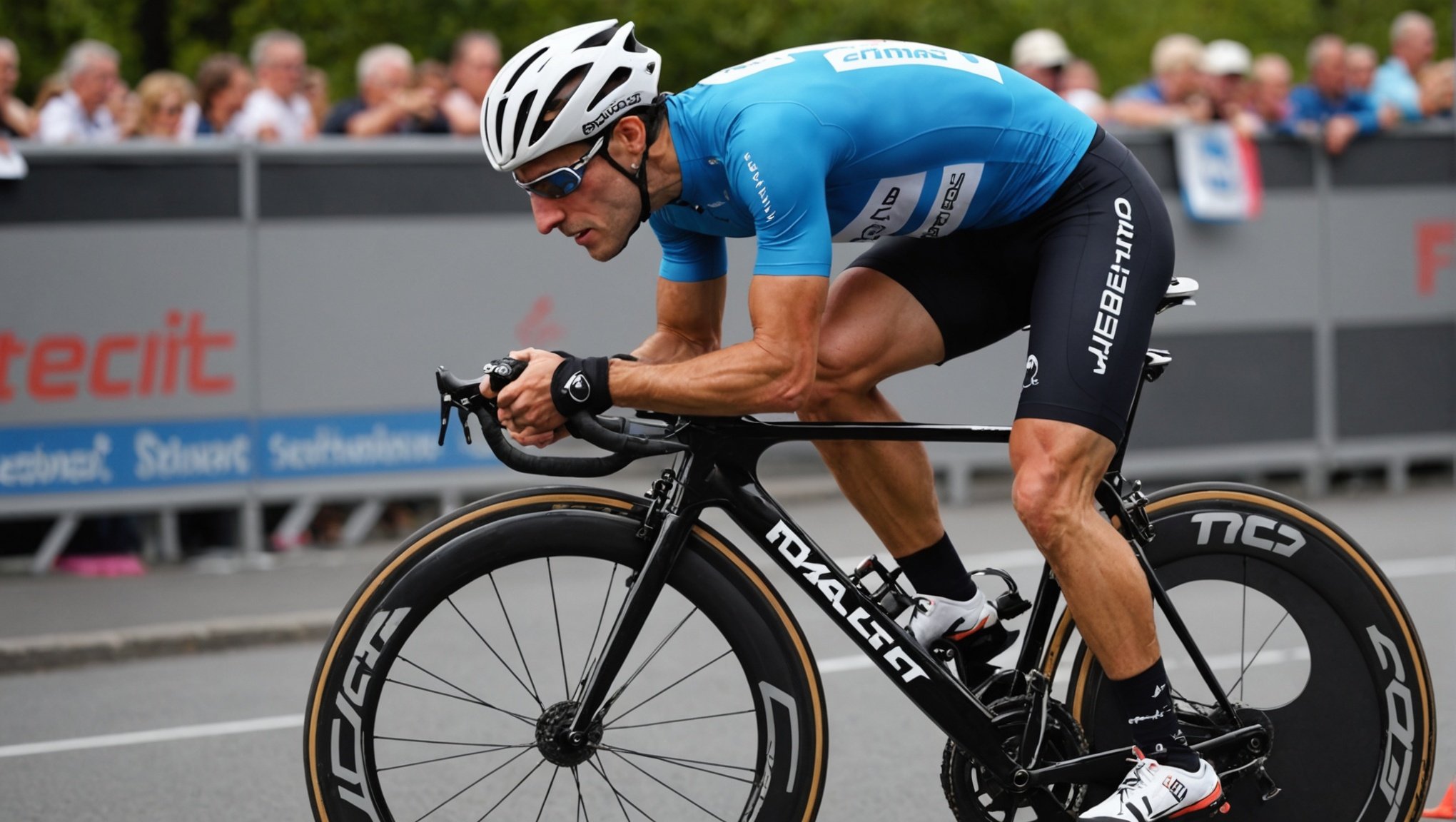Maximizing Performance: The Best Cross-Training Techniques for Professional Cyclists
For professional cyclists, the pursuit of peak performance is a year-round endeavor. While cycling itself is the primary focus, incorporating cross-training techniques can significantly enhance overall fitness, power, and endurance. Here’s a comprehensive guide on how to maximize performance through the best cross-training methods.
Understanding the Importance of Cross-Training
Cross-training is not just about filling the off-season with alternative activities; it is a strategic approach to improve cycling performance. Professional cyclists like Mathieu van der Poel have demonstrated that engaging in high-intensity cross-training during the winter can lead to breakthrough performances on the road.
Also to discover : Essential Core Workouts for Dive Athletes: Unlock Your Strength and Performance
Why Cross-Training Matters
- Injury Prevention: Cross-training helps distribute the physical load across different muscle groups, reducing the risk of overuse injuries.
- Improved Endurance: Activities such as running or swimming can enhance cardiovascular endurance without the repetitive stress of cycling.
- Enhanced Power: Strength training and high-intensity interval training (HIIT) can increase power output, a critical component of cycling performance.
Strength Training for Cyclists
Strength training is a cornerstone of cross-training for cyclists. It targets muscle groups that are crucial for cycling but may not be fully engaged during regular cycling activities.
Key Exercises
- Squats, Lunges, and Deadlifts: These exercises build leg strength, which is essential for generating power on the bike.
- Squats: Works the quadriceps, hamstrings, and glutes.
- Lunges: Targets the quadriceps, hamstrings, and hip flexors.
- Deadlifts: Engages the entire lower body and core.
- Core Exercises: Planks and Russian twists improve stability and balance on the bike.
- Planks: Strengthens the core muscles, including the abs and lower back.
- Russian Twists: Targets the obliques.
Benefits of Strength Training
| Benefit | Description |
|---|---|
| Increased Power | Strength training can significantly improve power output by building muscle mass and enhancing neuromuscular coordination. |
| Better Endurance | Stronger muscles can sustain longer periods of effort without fatigue. |
| Injury Prevention | Strengthening key muscle groups reduces the risk of injuries, particularly in the knees and lower back. |
| Improved Pedaling Efficiency | Strength training can enhance pedaling characteristics, making each stroke more efficient. |
High-Intensity Interval Training (HIIT)
HIIT is a powerful tool for cyclists looking to maintain or improve their performance during the off-season.
In parallel : Mastering BMX: Leveraging Video Playback for Enhanced Race Strategies
How HIIT Works
- Interval Sessions: Incorporate weekly HIIT sessions, such as 5×6 minute intervals or 3x3x30 second all-out sprints with recovery periods. This type of training has been shown to maintain performance gains better than low-intensity training alone.
- Example Workout:
- Warm-up: 10-15 minutes of easy cycling
- Intervals: 5×6 minutes at high intensity with 5 minutes recovery between intervals
- Cool-down: 10-15 minutes of easy cycling
Benefits of HIIT
- Maintains Performance Gains: HIIT helps retain the performance improvements made during the previous season, ensuring a stronger start to the new season.
- Enhances Lactate Threshold: HIIT increases the body’s ability to handle high levels of lactate, a key factor in endurance performance.
- Time-Efficient: HIIT sessions are typically shorter than traditional endurance rides, making them ideal for time-crunched cyclists.
Zone Training and Heart Rate Monitoring
Zone training is a structured approach to cycling that ensures you are working within specific intensity levels to maximize your training.
Understanding Training Zones
- Zone 1-2: Low-intensity endurance rides, ideal for recovery and base building.
- Zone 3-4: Moderate to high-intensity rides, used for building lactate threshold and endurance.
- Zone 5-6: Very high-intensity rides, typically used for short intervals and sprint training.
Heart Rate Monitoring
- Using Heart Rate Zones: Monitor your heart rate to ensure you are within the desired intensity zone. This helps in optimizing your training and recovery.
- Example Heart Rate Zones:
- Zone 1: 50-60% of maximum heart rate (MHR)
- Zone 2: 60-70% of MHR
- Zone 3: 70-80% of MHR
- Zone 4: 80-90% of MHR
- Zone 5: 90-100% of MHR
Cross-Training Activities
Besides strength training and HIIT, other cross-training activities can be beneficial for cyclists.
Running and Swimming
- Running: Improves cardiovascular endurance and can be less stressful on the joints compared to cycling.
- Example Workout: 30 minutes of easy running, 2-3 times a week.
- Swimming: Enhances upper body strength and endurance without the impact of running or cycling.
- Example Workout: 20-30 minutes of swimming laps, 2 times a week.
Cyclocross and Mountain Biking
- Cyclocross: Combines elements of road cycling and mountain biking, improving bike handling skills and overall fitness.
- Example Workout: Participate in a cyclocross event or practice cyclocross skills for 1-2 hours, once a week.
- Mountain Biking: Builds upper body strength and improves bike handling skills.
- Example Workout: 1-2 hours of mountain biking, once a week.
Recovery and Rest
Recovery is as crucial as the training itself. Here are some tips to ensure you recover effectively:
Importance of Recovery
- Muscle Repair: Allows muscles to repair and rebuild, making them stronger.
- Energy Replenishment: Replenishes energy stores, reducing fatigue.
- Mental Refreshment: Gives the mind a break, reducing the risk of burnout.
Recovery Techniques
- Rest Days: Include rest days in your training plan to allow your body to recover.
- Stretching and Foam Rolling: Helps in reducing muscle soreness and improving flexibility.
- Nutrition and Hydration: Ensure you are consuming a balanced diet and staying hydrated to support recovery.
Creating a Balanced Training Plan
A well-structured training plan is essential for maximizing performance.
Example Training Plan
Here is a sample 8-week off-season training plan for a cyclist with 6 hours of training time per week:
| Week | Monday | Tuesday | Wednesday | Thursday | Friday | Saturday | Sunday |
|---|---|---|---|---|---|---|---|
| 1-2 | Endurance Ride (2 hours) | Strength Training (1 hour) | Rest | Endurance Ride (2 hours) | Rest | HIIT Session (1 hour) | Long Endurance Ride (3 hours) |
| 3-4 | Endurance Ride (2 hours) | Strength Training (1 hour) | Rest | Endurance Ride (2 hours) | Rest | HIIT Session (1 hour) | Long Endurance Ride (3 hours) |
| 5-6 | Endurance Ride (2 hours) | Strength Training (1 hour) | Rest | Endurance Ride (2 hours) | Rest | HIIT Session (1 hour) | Long Endurance Ride (3 hours) |
| 7-8 | Endurance Ride (2 hours) | Strength Training (1 hour) | Rest | Endurance Ride (2 hours) | Rest | HIIT Session (1 hour) | Long Endurance Ride (3 hours) |
Tips for Time-Crunched Cyclists
For cyclists with limited time, here are some actionable tips:
- Prioritize HIIT Sessions: Incorporate at least one HIIT session per week to maintain performance gains.
- Use Zone Training: Ensure your rides are structured within specific intensity zones to optimize training.
- Include Strength Training: Even a short strength training session once a week can make a significant difference.
Maximizing performance as a professional cyclist requires a holistic approach to training. By incorporating strength training, HIIT, and other cross-training activities, cyclists can enhance their endurance, power, and overall fitness. Remember, recovery is just as important as the training itself, and a well-structured training plan ensures that you are always moving towards your performance goals.
As Mathieu Heijboer, head of performance at Visma Lease a Bike, noted, “The number of intensity days in winter increased. Nowadays riders enter the December camp on a much higher level that was previously impossible to imagine.” This shift in approach underscores the importance of intensity and cross-training in modern cycling.
By adopting these techniques and staying committed to your training plan, you can ensure that you are always at your best when it matters most – on the bike.






